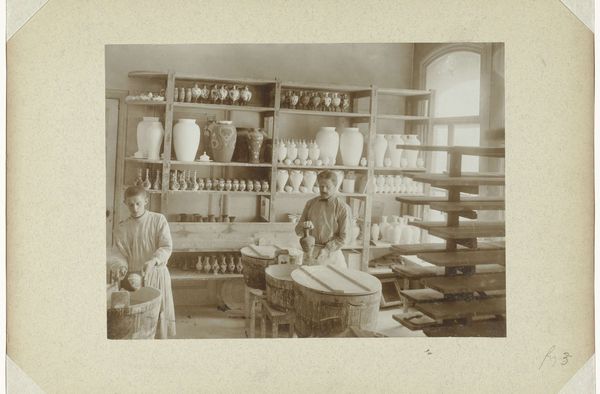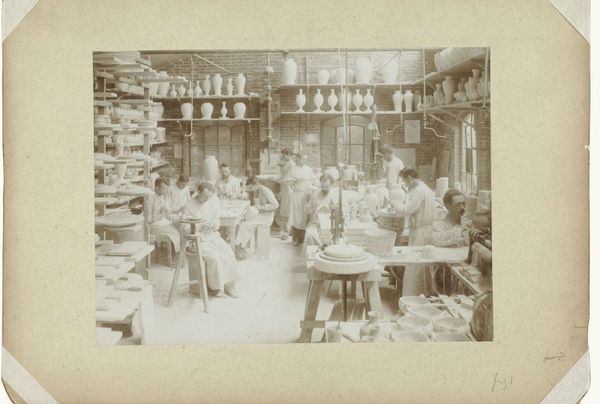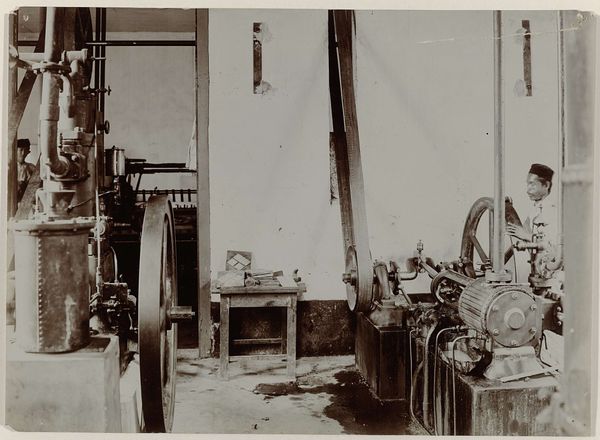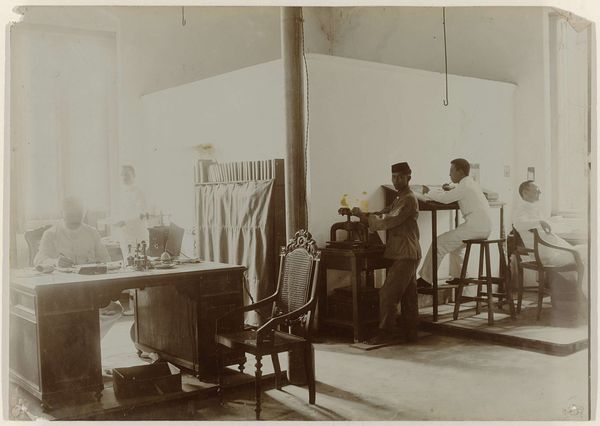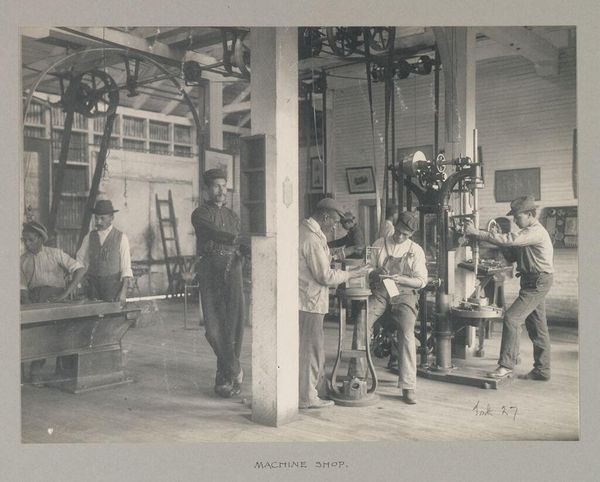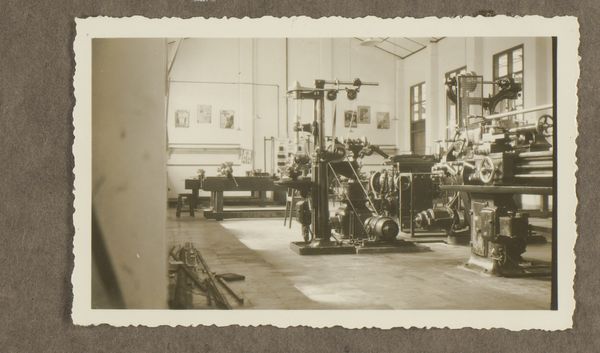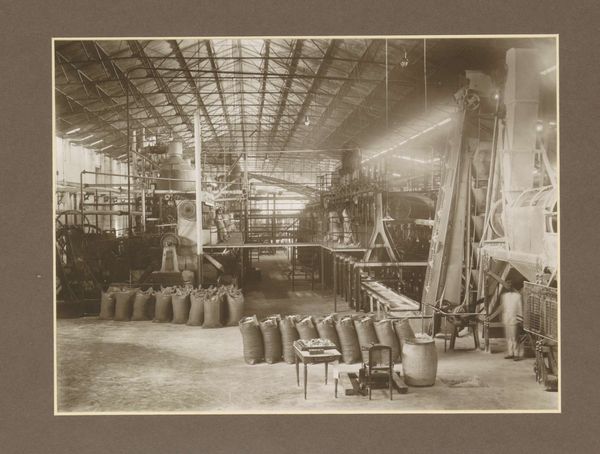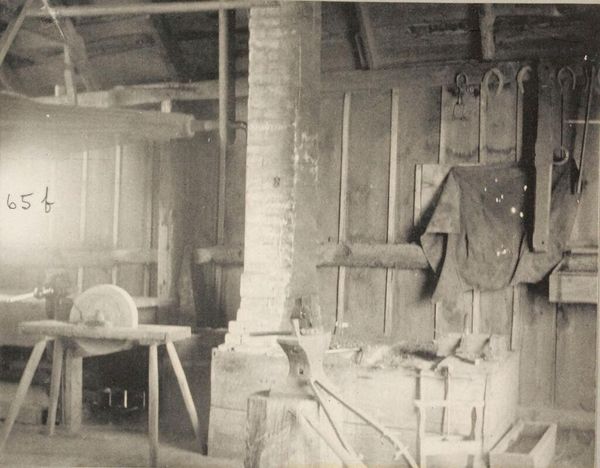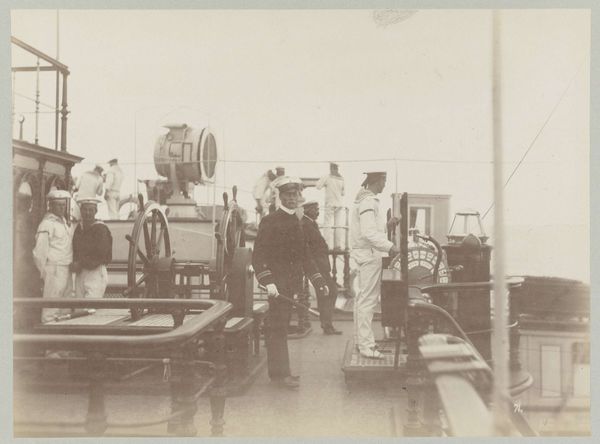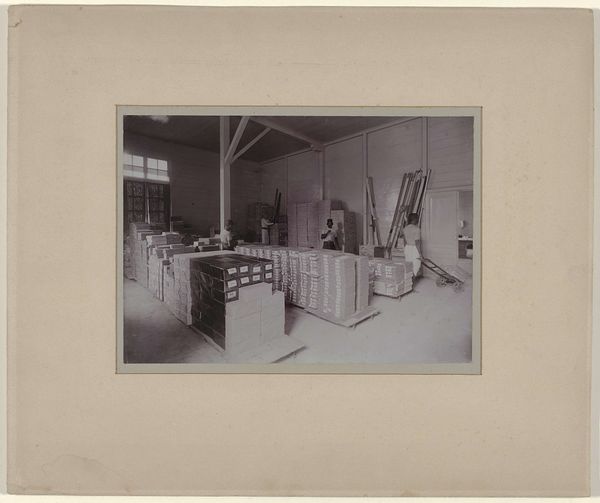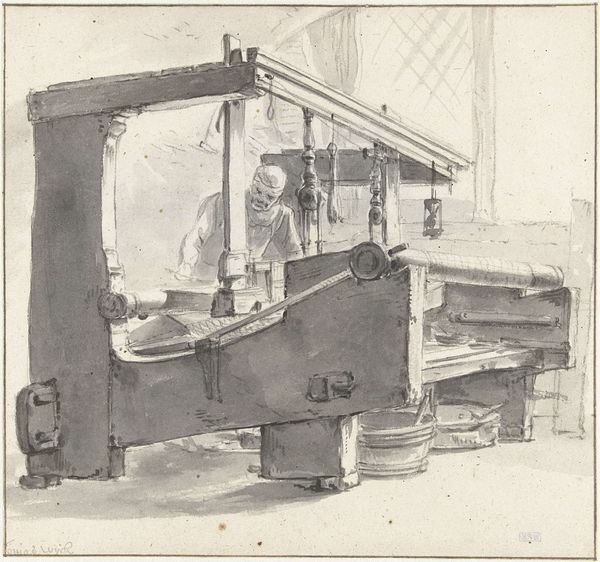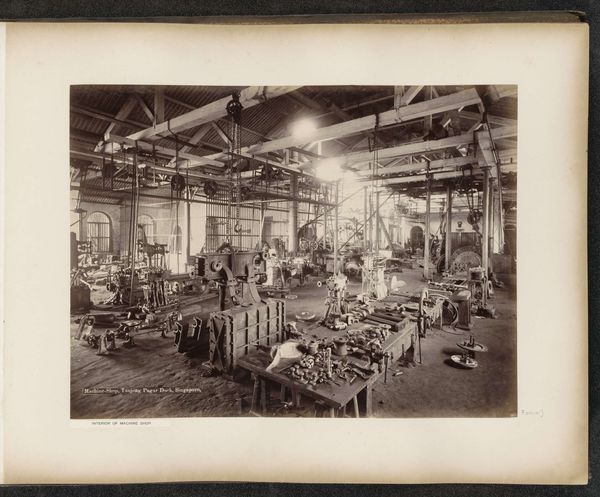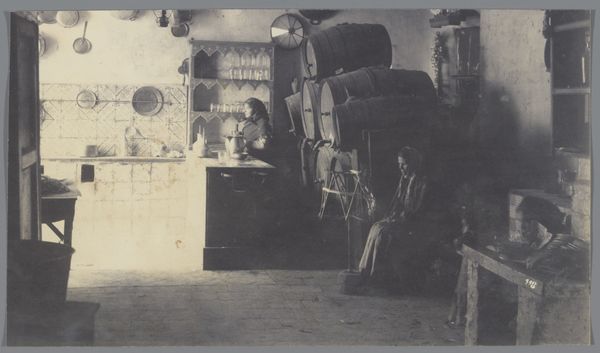
photography
#
archive photography
#
photography
#
historical photography
#
19th century
#
genre-painting
#
realism
Dimensions: height 166 mm, width 225 mm, height 242 mm, width 333 mm
Copyright: Rijks Museum: Open Domain
Curator: Ritscher & Landsman's photography from around 1890, specifically this piece entitled "Tegelpers van de porseleinfabriek Rozenburg," really throws you back in time, doesn't it? Editor: It does. I'm immediately struck by the scale of everything – those presses seem almost monumental compared to the people operating them. And there's a subdued, almost melancholic light bathing the scene. Curator: Absolutely. You can practically feel the weight of the industry, can't you? The textures—the rough brick, the cool metal, even the possible dampness—all palpable through this sepia filter. I feel like I can almost hear the clank and groan of those machines! Editor: Beyond the tactile, I see a story about labor and class. Look at the workers, their postures, their clothing. It's a powerful snapshot of the late 19th-century industrial experience. Consider what it might mean to have your work so thoroughly shaped by the machinery of mass production and your very image rendered so timelessly! Curator: That's a profound reading. Thinking about mass production, this image—this artifact—feels almost like a precious pebble snatched from the river of relentless industry... I can just picture these workers, dreaming in porcelain patterns by night. Editor: I see the workers not just as figures within the machine, but as active agents navigating constraints. These "genre-painting" shots immortalize them, even as it elides an examination of factory oversight or labor struggles that, were undoubtedly present in this porcelain production! It opens dialogue about power dynamics in the late 19th century that still resonates today. Curator: True, there's always more than meets the eye in photographs, especially historical ones. They reflect not only reality but also the photographer’s vision. Editor: And what the patrons demanded of them, which is the ultimate editorial influence on realism! Regardless, there's something deeply compelling about the unvarnished realism, that provides direct insight into the porcelain manufacturing in that era. Curator: For me, this photo is a portal. It takes me to a time where things were slower but somehow grander, where everyday objects were crafted with dedication and palpable humanness... it’s also beautiful to look at and appreciate on its own! Editor: Absolutely. By reflecting on pieces such as "Tegelpers van de porseleinfabriek Rozenburg," we encourage visitors to actively reimagine production not just through aesthetics, but social and material consciousness. It invites us all to pause and recognize the enduring human impact intertwined within even the most ordinary, machine-produced tiles.
Comments
No comments
Be the first to comment and join the conversation on the ultimate creative platform.
